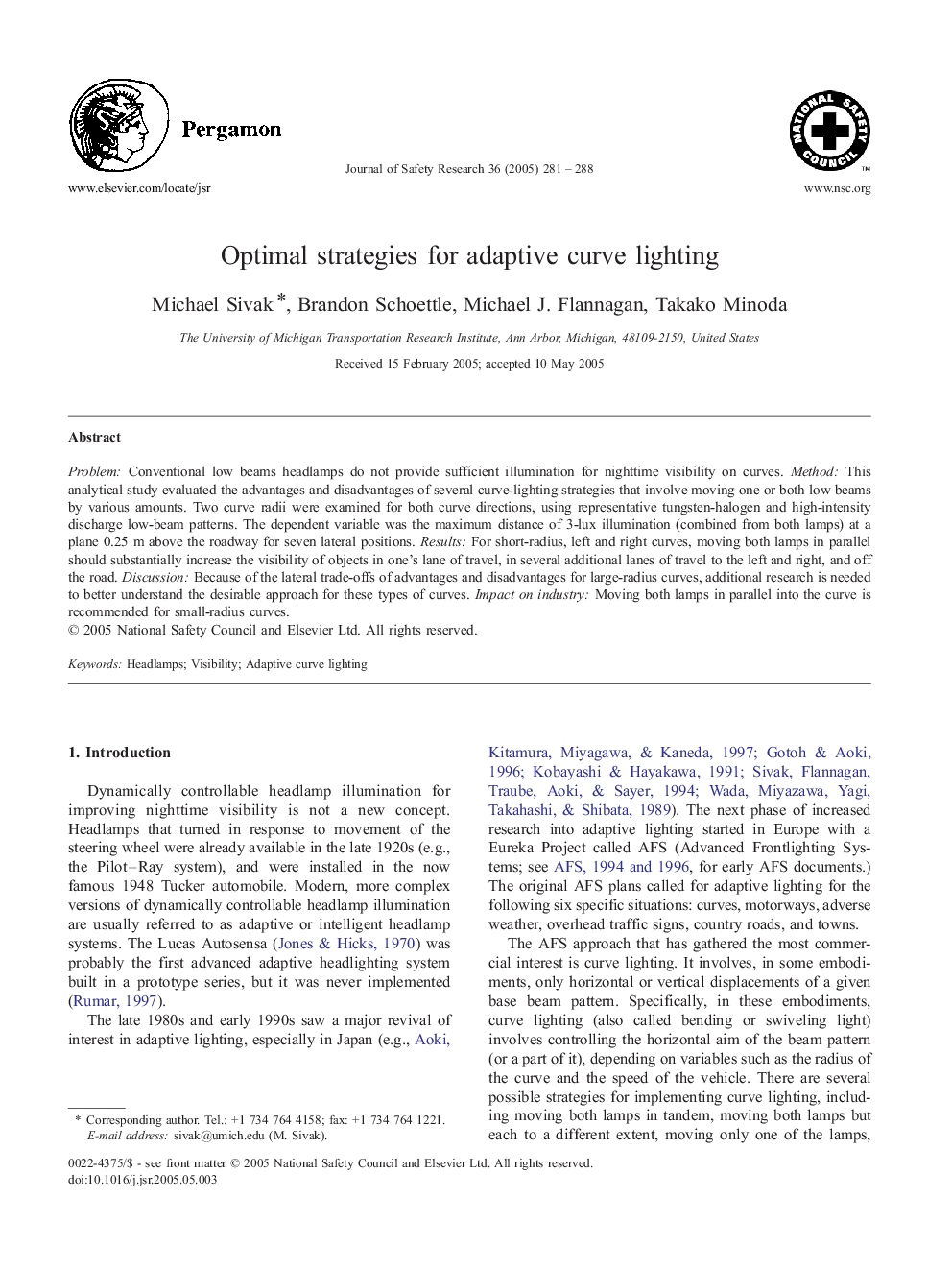| Article ID | Journal | Published Year | Pages | File Type |
|---|---|---|---|---|
| 10373849 | Journal of Safety Research | 2005 | 8 Pages |
Abstract
Problem: Conventional low beams headlamps do not provide sufficient illumination for nighttime visibility on curves. Method: This analytical study evaluated the advantages and disadvantages of several curve-lighting strategies that involve moving one or both low beams by various amounts. Two curve radii were examined for both curve directions, using representative tungsten-halogen and high-intensity discharge low-beam patterns. The dependent variable was the maximum distance of 3-lux illumination (combined from both lamps) at a plane 0.25 m above the roadway for seven lateral positions. Results: For short-radius, left and right curves, moving both lamps in parallel should substantially increase the visibility of objects in one's lane of travel, in several additional lanes of travel to the left and right, and off the road. Discussion: Because of the lateral trade-offs of advantages and disadvantages for large-radius curves, additional research is needed to better understand the desirable approach for these types of curves. Impact on industry: Moving both lamps in parallel into the curve is recommended for small-radius curves.
Keywords
Related Topics
Physical Sciences and Engineering
Chemical Engineering
Chemical Health and Safety
Authors
Michael Sivak, Brandon Schoettle, Michael J. Flannagan, Takako Minoda,
